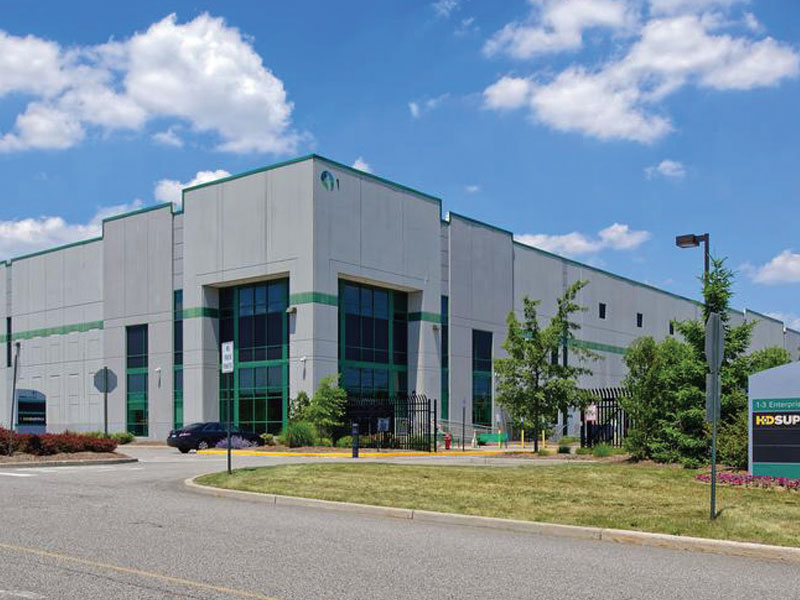The Covid-19 impact on warehousing and distribution could well outlast the pandemic itself, as new sourcing options, altered supply chains and a new wave of warehouses and distribution centers closer to consumers emerge.
As Covid-19 hurdled around the world, the disruption to global supply chains leapfrogged as well, throwing both supply and demand completely out of whack. That turmoil cascaded from manufacturer to transport operator to retailer to consumer, dramatically upending business and commerce everywhere.

It’s left a lot of operations scrambling for immediate assistance and for longer term fixes.
The pandemic hasn’t in itself forged a reshaping of the way warehouses operate; systems were developing rapidly before. Covid, however, brought the need for those changes to light. It’s been a wakeup call for some, an affirmation for others.
“The supply chain is always disrupted, it’s just the way of life. [Under Covid-19] the disruption has become so extreme,” said Patty McDonald, global solution marketing director for technology provider Symphony RetailAI. “All those challenges are still the same. They’re just now intensified.”
What’s more, experts agree, when Covid finally ends, its impact on warehouses and distribution centers won’t dissipate.

“We’re seeing companies want to change their flow models, because it’s still a good idea, even when this pandemic is over,” said Scott Stone, marketing director at Cisco-Eagle, a material handling systems integrator.
According to Rich Thompson, international director, supply chain & logistics solutions at JLL, the pandemic has “put a spotlight” on several major developments in supply chain management, as it impacts warehouses and distribution and fulfillment centers: The need for more warehouse automation and technology; a growing emphasis on e-commerce; a diversification of sources; and network redesign to accommodate all these.
Covid-19 and Labor
Stone adds another important category to the mix: “What Covid does is attack the biggest component of warehousing and distribution, which is labor,” he said. “Covid is another strong point in favor of automating and using labor-reducing devices in the facility.”
In terms of drivers, e-commerce ranks right at the top. It has flourished, if not dominated retail, under a shelter-in-place environment and it will continue an ascendency in a post-Covid world. E-commerce last year totaled 11% of total retail, according to the US Census Bureau, an all-time high. It could easily reach 15% of total this year. Forecasters believe that could easily grow to 30% of total in the next several years, while traditional retail will continue its decline.
Online grocery delivery is a prime example. The number of households that used online grocers doubled in one month from 20 million in February to 40 million in March. Forty percent of those were first-time users. Some percentage of those online rookies will stick around.
The systems and facilities necessary in online groceries warehousing and distribution are not only complex, but much different than traditional supermarket distribution. Combining the two is harder still.
E-commerce requires a very different distribution model than does traditional retailing, where facilities were designed to service not the individual consumer, but the retail store. “It may be the same footprint, but it’s a very different looking facility,” said Thompson. “It’s not pallets in and out. It’s automation and robotics and individual pickers and three times the amount of labor inside.”

So, the distribution center became the fulfillment center, where one building could house millions of different items.
But even Amazon is refashioning its approach, as it attempts to deliver goods more rapidly than ever. It’s moving from an emphasis on giant-sized fulfillment centers, ranging from 800,000 to one million square feet, to a variety of buildings of smaller and smaller sizes. These include sortation centers, receiving centers and delivery stations.
Cozying Up to the Customer
The aim of all this is to get closer to the customer. That translates into both faster service and less costly freight hauling, a model that will reflect warehouse building for years to come. “The next wave is going to be fulfillment centers that are smaller, closer to major population centers,” said Thompson, referring to what is sometimes called urban logistics facilities or last mile. “We’re early on in this development.”
This theme has several variations. Dan Khasis, CEO and founder of Route4Me, a logistics technology provider, points out two: One is the elimination of distributors altogether. “More businesses will see the need to start servicing customers directly, without intermediaries,” Khasis predicted. One variant of this is direct drop-shipping from the manufacturer.
The other is to use retail stores as mini-distribution centers themselves.
Over the past several years, advanced technology has become central to warehouse management. The pandemic made some of these advanced applications indispensable, as manufacturing was disrupted while consumer demands of many goods spiked.
Take Symphony RetailAI, which provides various artificial intelligence and machine learning-based technologies. McDonald described one offering, an order fulfillment engine, which monitors not only availability of goods, but decides what to do if there are shortages. “If I’m trying to send shipments to 500 stores and I only have enough for 400, which one should I have the warehouse pick first?” she explained. “It’s called an available to promise.”
That kind of advanced decision-making will continue long after the pandemic, as demands for speed and efficiency accelerate.
“The big change will be in the software,” believes Stone, whose company offers pick-to-light technology, which guides pickers to the right product. “You have to be really good at understanding where an order is and where you can fulfill it from and where you can take these various items that are coming from different sources, consolidate them and pull them out.”
Technology is used to improve efficiencies within a warehouse or throughout a warehouse system. Route4Me, for example, now offers a warehouse simulator tool that looks at historical usage and then simulates what would happen in terms of cost and delivery speed if different warehouses were used. So, another warehouse may be further away, but cost less in terms of delivery charges and be faster because of traffic or tolls.

Automation has become more and more commonplace in warehouse operations as well. This reflects not just advanced technology, but dramatic cost reductions, as well as the need to combat a shortage of skilled labor. Covid has demonstrated these benefits.
“The general perception of automation is that you’re looking at a big, dark facility, with hardly anybody in it, running on its own. But more common automation is automating a piece of the process,” said Stone. “Automation is one of those things you can do and say ‘these are places I don’t need a person here. Really, you’re not at a point in history where, oh, I, I’m going to eliminate jobs and hurt people. You’re just trying to keep up. Covid exacerbates that.”
Impact of Sourcing Changes
As manufacturers, retailers and distributors alike scramble to find sources for the goods they need, technology becomes central to the quest. But with changes in sourcing, must the warehouse change as well? Will near-sourcing, for example, necessitate where warehouses and distribution centers are built?
“It depends on your scale,” Thompson said. He cited Prologis, the largest owner of industrial properties and warehouses in the US. Prologis has facilities everywhere. “At the end of the day, we don’t care where stuff is made,” said its CEO and chairman, Hamid Moghadam, in a recent television interview. “We care about where the stuff is consumed.”
But a smaller operator might become worried if goods start flowing through the Suez or Panama Canals instead of across the Pacific.
All these shifts in supply, consumption and distribution patterns necessitate warehouse systems changes and overhauls. Each operation is at a different stage of development. Some, said Khasis, are still struggling with hugely expensive legacy systems installed a decade or two ago. Others, he continued, that recently built state-of-the-art facilities are much further along.
Covid certainly gave everyone a heightened sense of urgency. “People have come to us, asking for help, looking for technology,” said McDonald. “That was always the case before. But now it’s intensified.”
Tackling these new distribution imperatives is no easy task and can’t be done overnight, or either in a matter of weeks and months. “Customers are interested in doing this, obviously in response to Covid, but they can’t get it done quickly enough today because you have to redo software, you have to redo systems, you have to train people,” said Stone. “But they are moving that way. They’re seeing the wisdom.”






